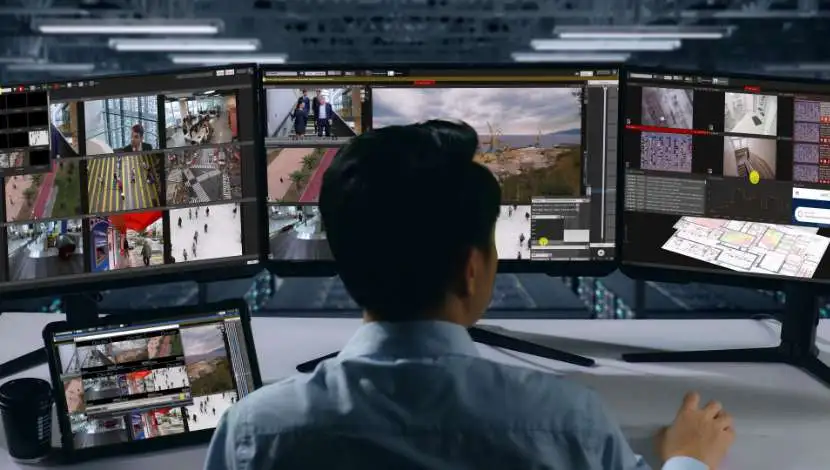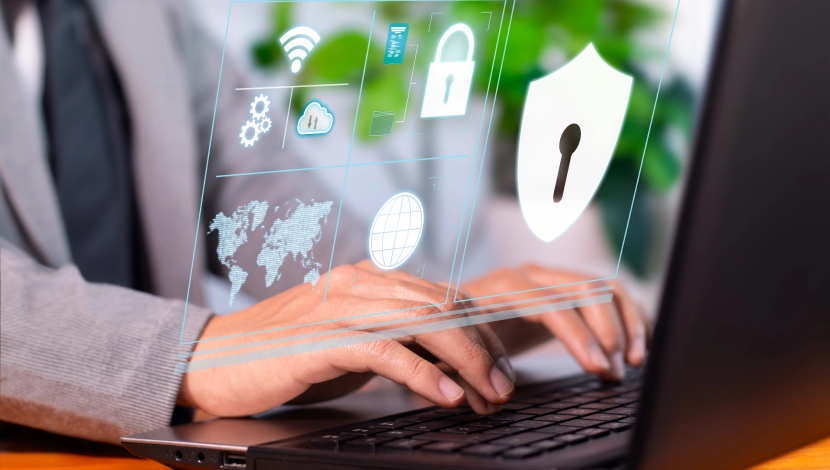Cybersecurity in Video Management Systems and PSIM
Modern video surveillance systems are more than isolated CCTV — they are integrated into your IT/OT infrastructure and increasingly targeted by cyber threats. Securing these systems protects sensitive data, ensures operational continuity, and aligns with evolving regulatory frameworks.
The Core of Cybersecurity in Physical Security Systems
Every cybersecurity measure in VMS and PSIM ultimately reinforces confidentiality, integrity, or availability.
Protecting Sensitive Video Data
- Ensure only authorized users can access live feeds and archives.
- Apply encryption in transit (HTTPS/TLS) and at rest to safeguard against interception.
- Use privacy masking and role-based access to meet GDPR and similar regulations.
Common Cybersecurity Risks
Network-connected cameras and devices
- IP endpoints and default credentials are prime attack vectors.
Vulnerabilities in video management software
- Weak authentication, lack of integrity control, and insecure network settings.
Risks in PSIM and integrated systems
- Centralized control and automation amplify risk if access controls are weak or integrations are insecure.
How Cybersecurity Works in VMS and PSIM
Typical attack surfaces in the system
- Weak or default credentials.
- Insecure data transmission and credentials storage.
- Insecure archive storage.
- Integration points with third-party systems.
Where security controls apply in the workflow
- Secure camera-to-server and cloud connections via HTTPS/TLS.
- Role-based access control at the VMS/PSIM user level.
Compliance and Standards
GDPR and NIS2 are increasingly mandatory for organizations in the EU. The AI Act (for high-risk AI like facial recognition) imposes requirements like ongoing monitoring and incident reporting.
FAQ
How can organizations strengthen cybersecurity in physical security systems?
Hardening measures such as encryption, strong access controls, regular software updates, secure configurations, network segmentation, and end-to-end secure connections help reduce vulnerabilities.
What is hardening in cybersecurity?
Hardening refers to the process of securing systems by reducing vulnerabilities, disabling unnecessary services, changing default credentials, applying patches, and implementing strict access controls.
What is encryption in cybersecurity?
Encryption is the process of converting information into a coded format that can only be accessed or understood by authorized parties with the correct decryption key.
What does it mean to encrypt data?
Encrypting data means applying algorithms that scramble readable information into unreadable text, making it inaccessible to unauthorized users.
What does encrypted mean in video surveillance?
When video surveillance data is “encrypted,” it means live streams, archives, or communications between devices are securely encoded to prevent interception or tampering.
What does encryption do?
Encryption protects sensitive data by ensuring that even if it is intercepted, it cannot be understood or misused without proper access keys.
What is meant by encrypted data?
Encrypted data is information that has been transformed into a secure format, making it unreadable to anyone who does not have the key to decrypt it.

